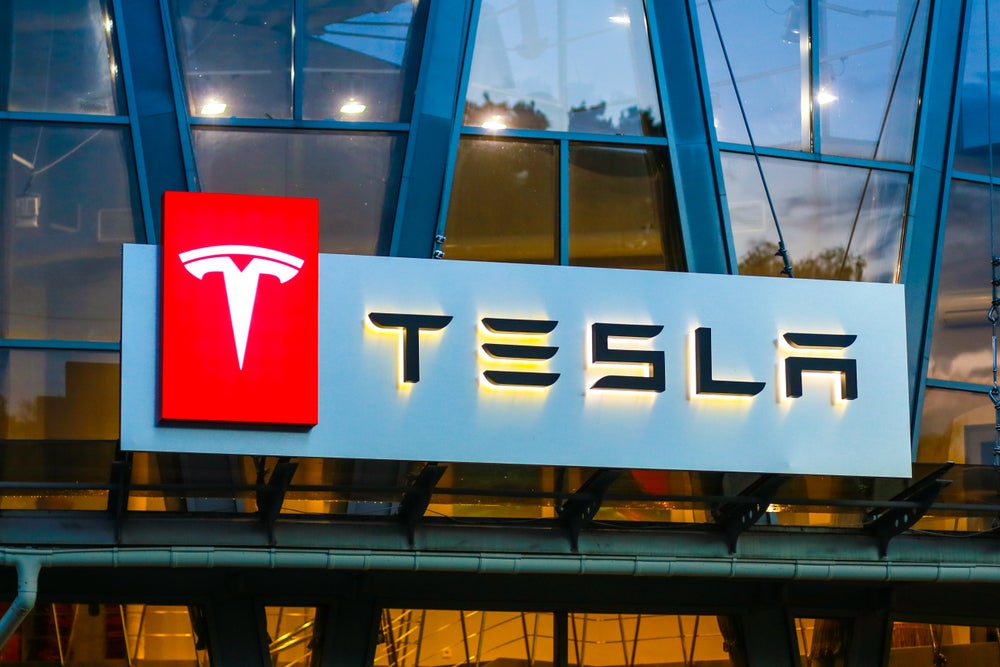
The popularity of alternative fuel vehicles for fleet has increased in recent years, but lessors still face some challenges in speeding up the development of the market. Sotiris Kanaris reports
Over the past five years, car manufacturers have invested heavily in the research and development of alternative fuel vehicles (AFVs), those which do not run on traditional petroleum fuels. As a result there’s been an influx in the number of hybrids, plug-in hybrids and electric vehicles (EVs) entering the market.
The variety of AFV models in combination with the constant technological improvement has influenced most fleet lessors to create propositions for these vehicles.
Wayne Millward, fleet consultant at Arval UK, says: "Most leasing companies offer a funding arrangement for AFVs. Lessors realised these vehicles are here to stay and they are the way forward."
Millward adds that the increased number of AFV products and their wide press coverage has removed companies’ initial nervousness around these products, increasing demand for them.
According to statistics from the Society of Motor Manufacturers and Traders, the number of fleet AFVs registered in the UK jumped by 75% year-on-year in the first seven months of 2015 to 19,474 units.
How well do you really know your competitors?
Access the most comprehensive Company Profiles on the market, powered by GlobalData. Save hours of research. Gain competitive edge.

Thank you!
Your download email will arrive shortly
Not ready to buy yet? Download a free sample
We are confident about the unique quality of our Company Profiles. However, we want you to make the most beneficial decision for your business, so we offer a free sample that you can download by submitting the below form
By GlobalDataOther factors that have boosted the demand for this vehicle category are grants and improved design.
Martin Brown, managing director at Fleet Alliance, comments: "We’re now seeing an improvement in desirability because the look and feel of these cars has got better. Previously they were not very attractive."
The plug-in hybrid Mitsubishi Outlander was the most popular AFV in the first half of the year with 5,265 units sold, followed by electric cars Nissan Leaf (1,129) and BMW i3 (743).
The strong demand for plug-in hybrids is highlighted by deputy chief executive officer at ALD Automotive Tim Albertsen, who observes a considerable increase in popularity of these vehicles over the past 12 months.
However the demand for plug-ins in the UK could be affected by changes in the government plug-in car grant. Initially grants applied for plug-ins and EVs, but since April eligible AFVs must meet certain criteria depending on emission levels and zero-emission-capable mileage.
"The majority of grants available depend on how much range you can get from the battery," says Millward. "Models like the Mitsubishi Outlander won’t attract the pool they did in the past because users can’t get 50-60 miles of battery life out of it, while full-electric has the range to get the full grant."
The current UK plug-in grant – which provides up to £5,000 off the purchase price for EVs – has proved appealing for fleet, as 52% of EV sales in the first half of 2015 were for fleet.
Head of marketing and business development at Alphabet International Carsten Kwirandt says the company is ‘extremely’ satisfied with the sales volumes of its EVs, although he specifies they vary from market to market depending on the fiscal regime of each market.
Albertsen believes that government incentives around Europe are essential to generate demand for fleet EVs. He says: "The market for electric vehicles in Norway is taking off very well because electric vehicle users do not pay company tax, cars can drive in the bus lanes, and can park free in Oslo. These incentives are central, especially for pure electrics. If you don’t have incentives like that, pure electrics are going nowhere."
Poppy Welch, head of Go Ultra Low – a campaign encouraging the purchase of AFVs, funded by the UK government and seven car manufacturers, highlights other reasons behind the increased popularity of EV for fleet.
"Companies can see that over the whole life of the car they can make quite significant savings in fuel costs. I imagine for those companies that have started to take on electric cars that is one of the main drivers, as well as tax benefits, lack of congestion charge, and the 20-40% reduction in service maintenance costs," says Welch.
Challenges to lessors
An obstacle to demand for EVs is their autonomy, as they have a limited range. "I would say that most people do not want an electric car, even if 90% of their trips are only 30-40km long. They do not want cars with autonomy of 100-150km," says Albertsen.
The so-called ‘range anxiety’ is identified as a factor negatively influencing the uptake of these vehicles by all the lessors Motor Finance talked to.
"With electric vehicles there’s still the range anxiety; people are still a bit nervous about what would happen if anything unforeseen occurs, like a road closed or high levels of traffic," says Brown.
The small network of recharging stations also poses a challenge for fleet lessors to promote EVs, according to Kwirandt.
He says another barrier that makes AFVs less attractive than internal combustion engine (ICE) cars for fleet is price.
"Wherever a new technology enters the market, price is an obstacle to demand," Kwirandt says. "The price of electric vehicles is high because the development cost is extremely high. I believe the cost of EVs, especially the cost of batteries, needs to be lower in order to be competitive with internal combustion engine cars."
The residual value performance of the first generation of EVs was poor, but over time it is improving. Glass’s claims they are moving closer to those of traditional diesel cars as the used car market becomes more accustomed to the technology.
Despite the improvement, residual values remain an issue for lessors. Glass’s found that three out of ten of the worst first-year depreciators were electric cars. In the 12 months ending June 2015, the Renault Fluence, Citroën C-Zero and Nissan Leaf E all lost more than three-quarters of their value after covering 12,000 miles during the past 12 months.
Brown says: "As a lessor, you still have to make sure that the resale value and residual value is correct."
Fleet Alliance’s Brown also says that a challenge to lessors is to ensure the sales team is educated enough to speak confidently and fluently on alternative fuels and identify what is right for the client.
Some of the obstacles to demand for EVs are gradually being lowered. For example, over time the range of these cars is increasing and prices have declined.
In addition, the issue around charging points is gradually being resolved in the UK. According to Go Ultra Low there are currently approximately 9,000 publicly accessible charging points around the UK, while Tesla Motors decided to develop a network of superchargers around Europe.
Competition in the market
The majority of fleet lessors have entered the market, engaging in conversations with fleet managers over the use of AFVs. Many lessors have invested in the education of their staff around the subject and have a consulting approach, for example, Alphabet has AlphaElectric, a four-step consulting approach which is currently available in 13 markets.
Apart from competition between them, lessors have to compete with the captives which offer attractive finance packages in order to promote their products.
Commenting on the competition, Albertsen says: "We compete more or less on the same terms. I think all lessors have a similar view on the future of the market, residual values and maintenance. As a result, we meet each other in the market with similar offers and we compete as we do with ICE cars. In terms of full electrics, the market is driven by manufacturers, because it’s their technology and they have to prove its good enough to take the risk on residual values for these cars."
Brown says that captives probably have an edge in terms of pricing, but he doesn’t think the situation is different from the standard ICE. He adds that some companies choose lessors over captives because they want a mixed fleet.
On the other hand, Millward believes that the price advantage of captives over lessors fluctuates.
He says that sometimes captives are cheaper because they take risks to promote their products, but once they reach certain targets they take less risk.
None of the fleet lessors was able to identify a specific client profile for AFVs, mentioning that both large corporations and SMEs have been interested in the products.
Albertsen says: "Globally the larger corporates see having a fleet of AFVs as part of their CSR, whereas smaller companies – which have more liberated car policies – are interested in them because they like to try out new technologies and ways of doing things."
Future expectations
"The market will continue to grow," says Millward. The manufacturers made a commitment over the next two-to-three years to increase their product range of alternative fuel vehicles. There will be more AFVs used for fleet, and the retail sector will probably grow at a slower rate."
Albertsen agrees that the market will expand in the future, but says the speed of growth will depend on a number of parameters.
"It’s definitely a growing market and the speed of that development will depend to some extent on the manufacturers’ offerings in terms of autonomy of the vehicles, subsidies from the government, and the development of the correct infrastructure," says Albertsen.
The way that infrastructure is built around the UK could affect the demand for electric vehicles and plug-ins.
Brown believes that the infrastructure in London will improve significantly over the next two-to-three years, whereas in other urban centres like Leeds, Glasgow or Edinburgh it will probably be "a different story".
"Then if you think about the rural areas in the UK it becomes even more problematic," he adds.
The need for governments to invest in this sector and its infrastructure is highlighted by Kwirandt, who says: "I think there’s an obligation for governments around the world to further promote electric vehicles and charging infrastructure, to allow e-mobility to develop on a broader scale. Imagine the levels of emissions that could be saved every day if all the cars on the road taking a 30km trip were EVs. This would be tremendous.
"Governments have a duty to promote e-mobility better and further, maybe through leveraging taxes or offering more public charging facilities, or even by supporting the installation of private charging units at people’s houses."
The UK government targets that by 2040 all vehicles sold in the market will be AFVs and by 2050 every vehicle on the road will be alternatively fuelled. "These are ambitious targets but there’s significant funding in place to achieve that," says Welch.
The composition of the AFV fleet market is likely to change with the launch of hydrogen-power cars. Last month, Toyota presented its first hydrogen-powered car called ‘Mirai’ at the Frankfurt Auto Show IAA, while Honda will soon unveil its own model.
Albertsen believes that once manufacturers manage to stabilise the technology for hydrogen cars, it will be the type of vehicle with the "brightest future."







